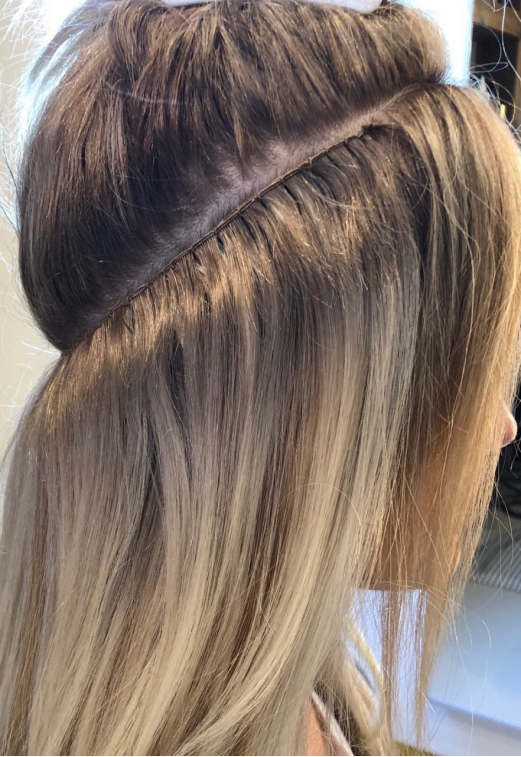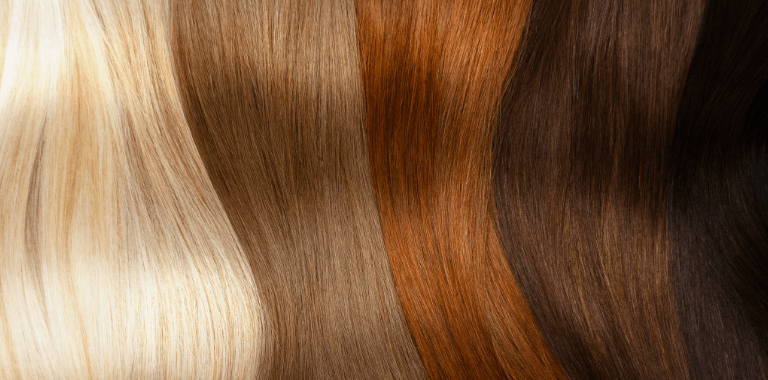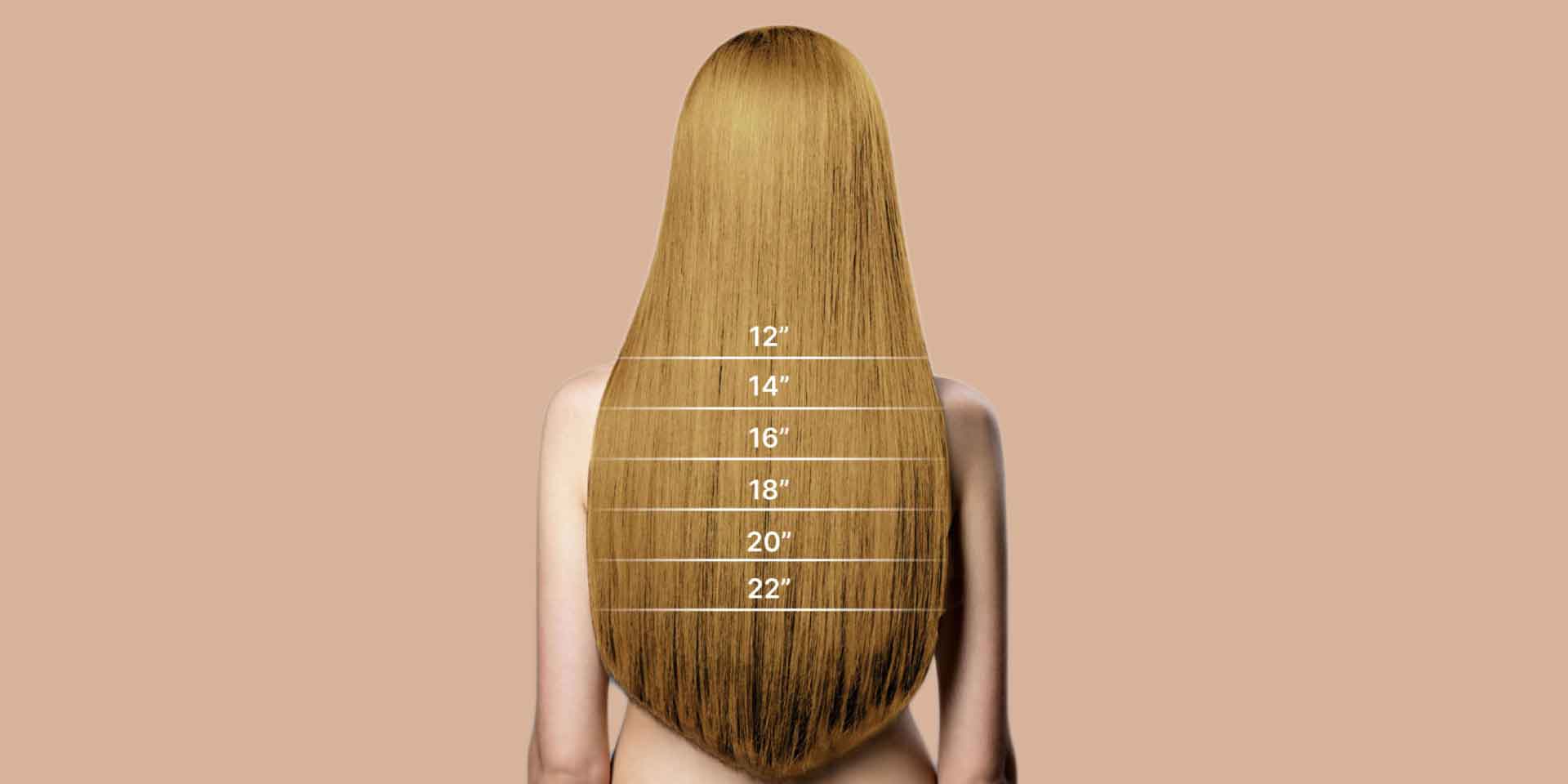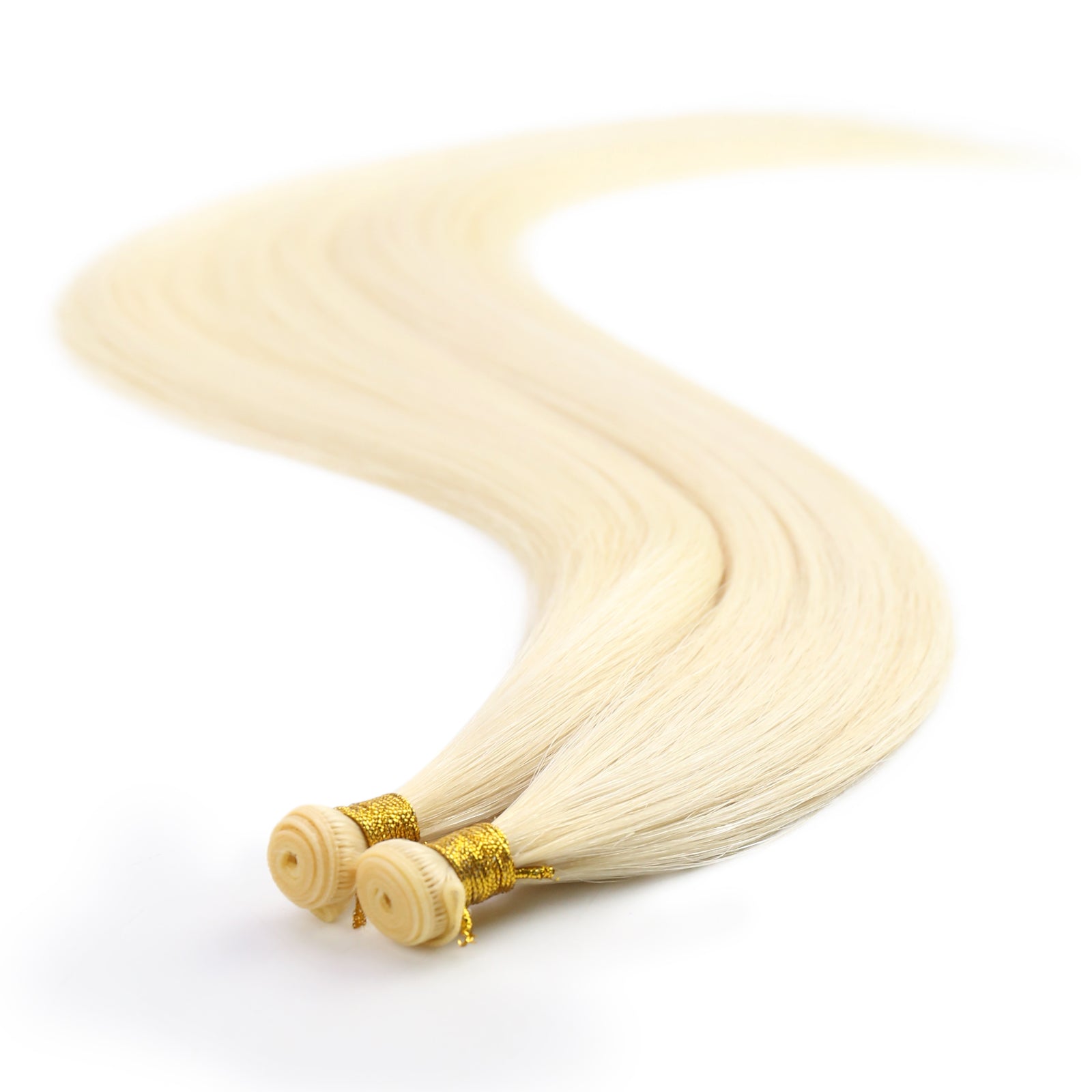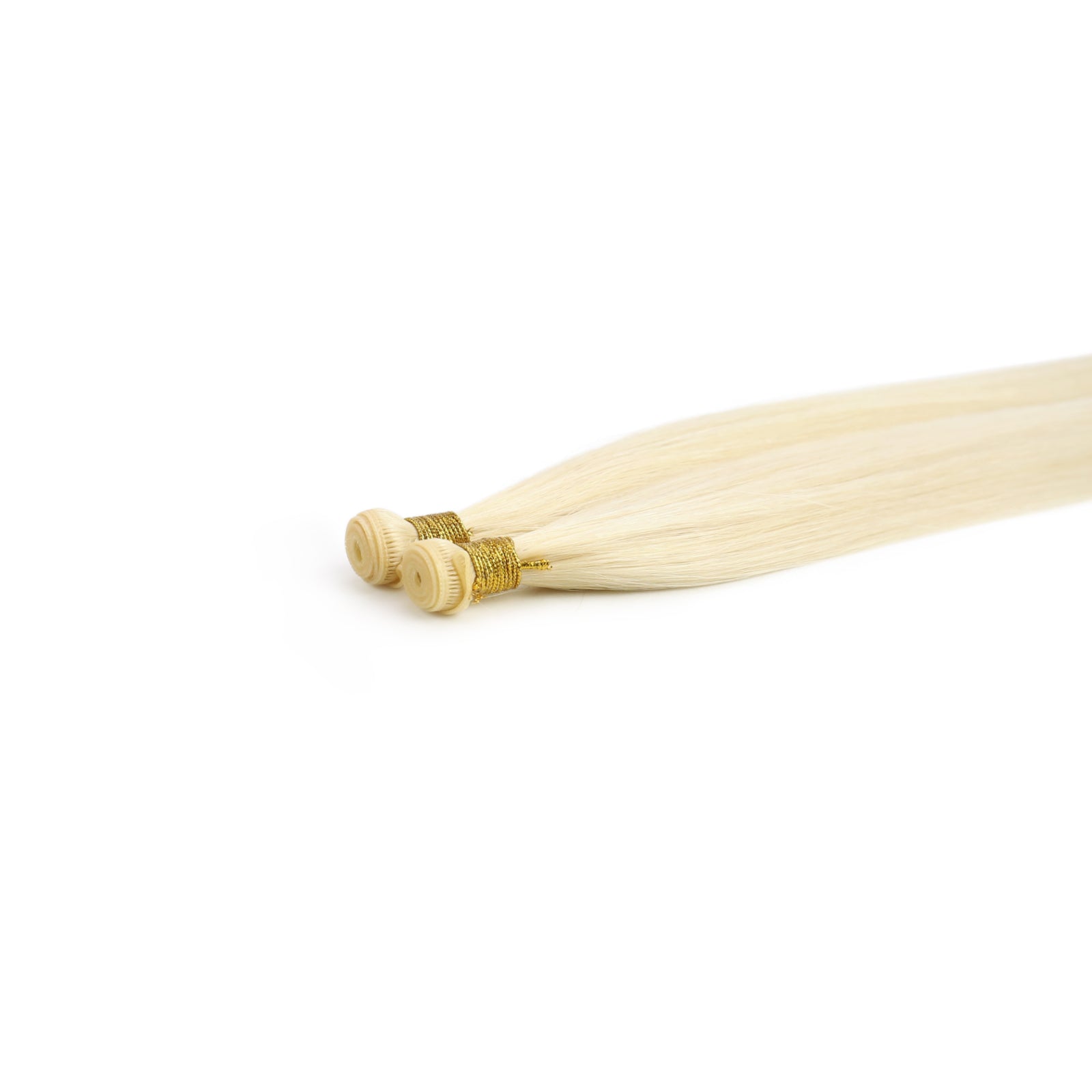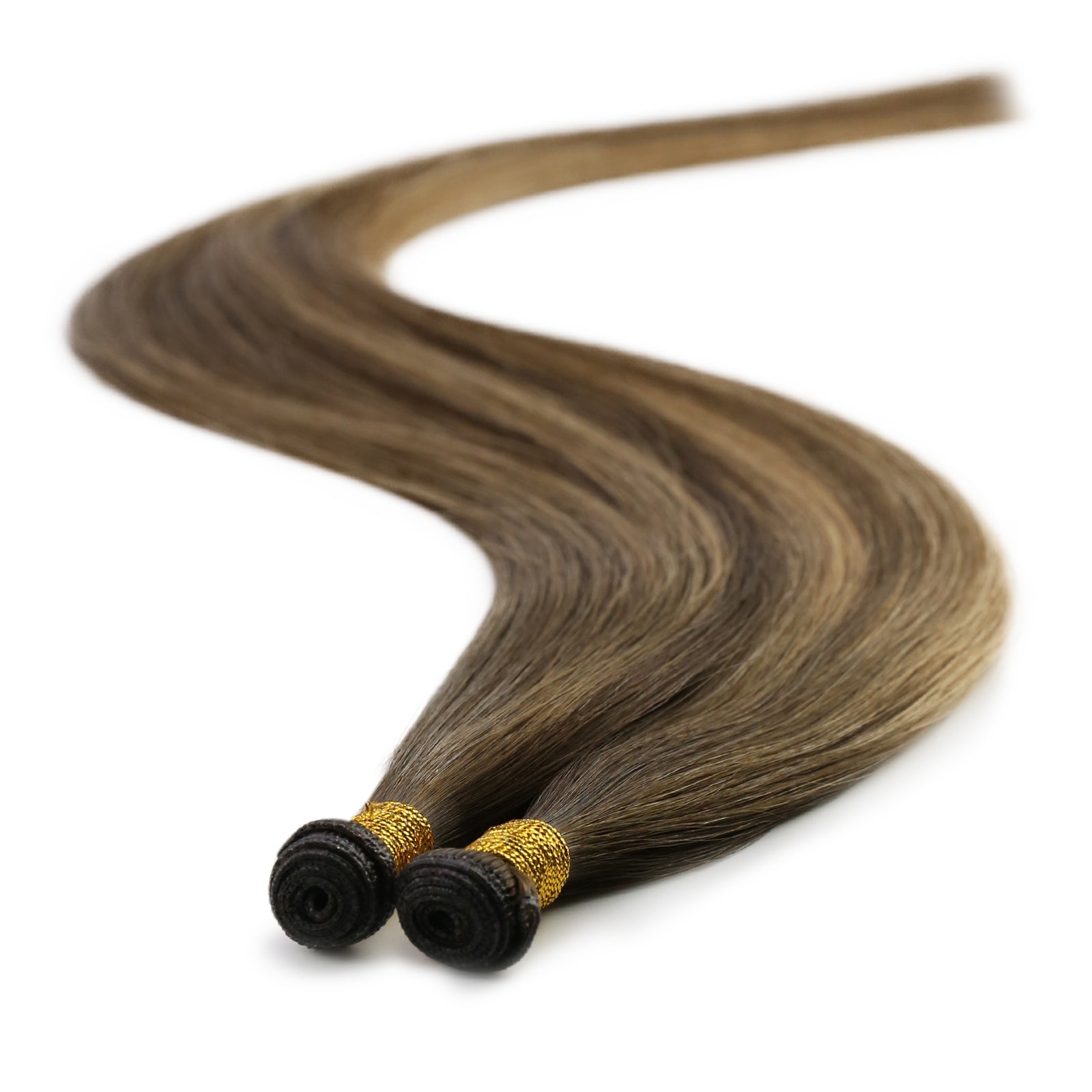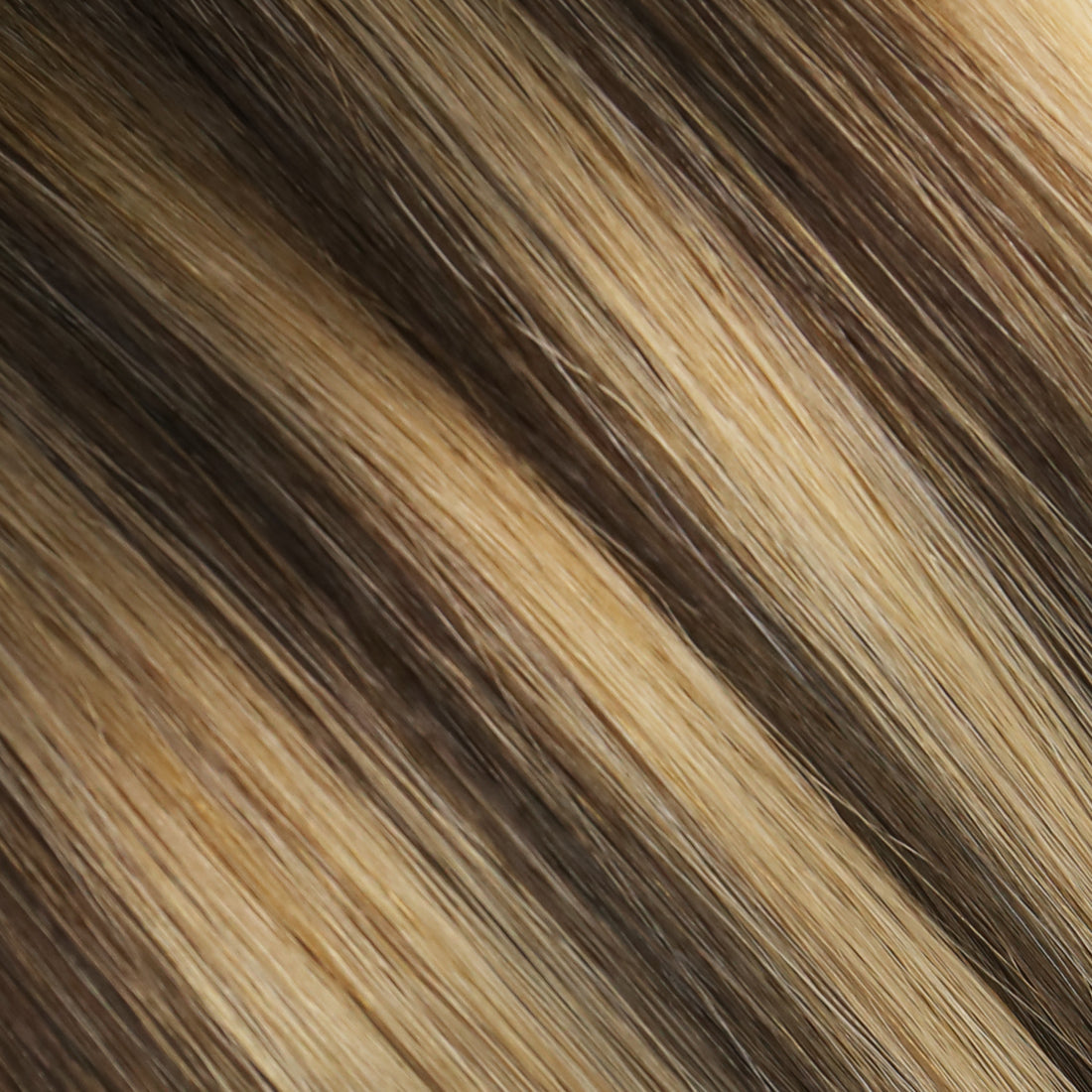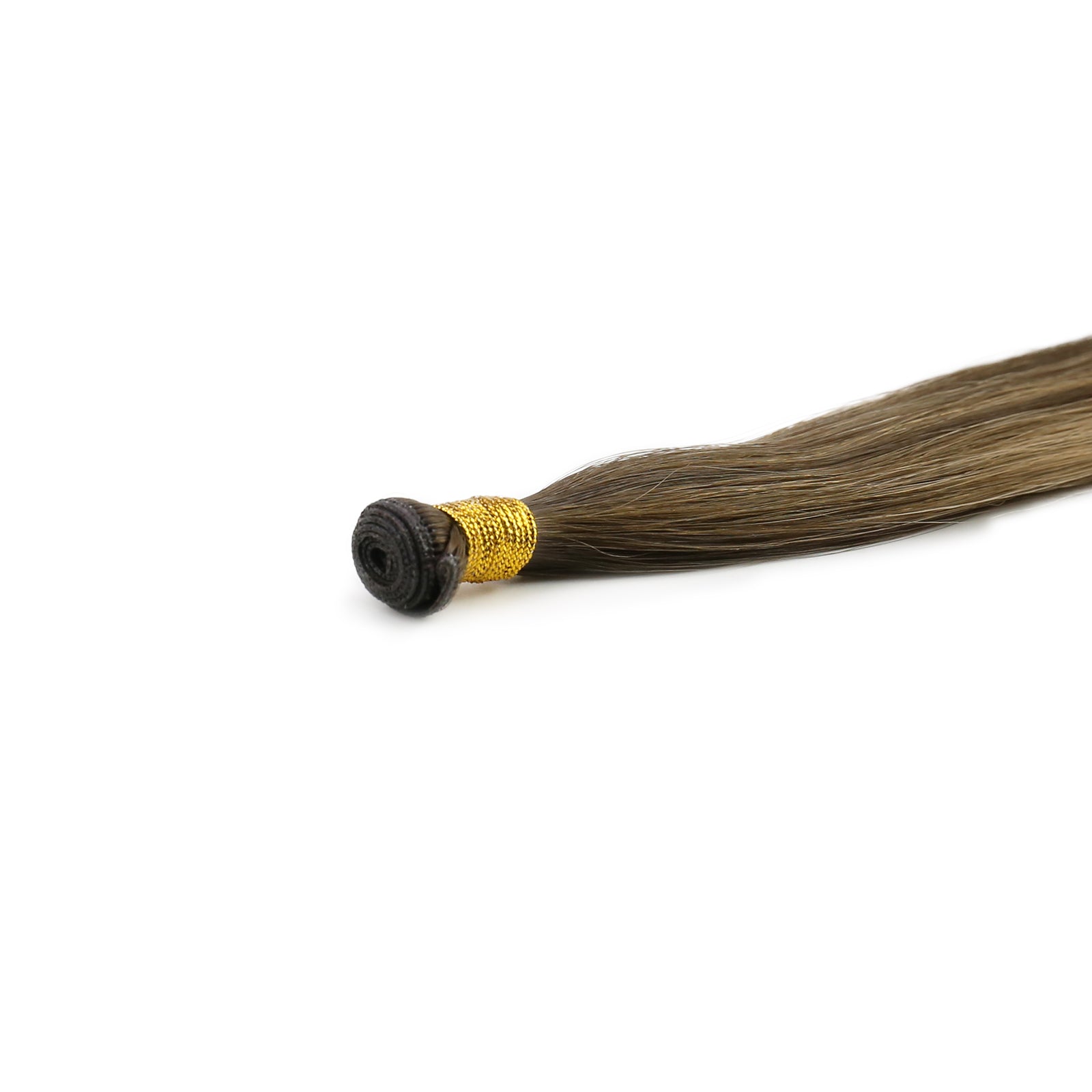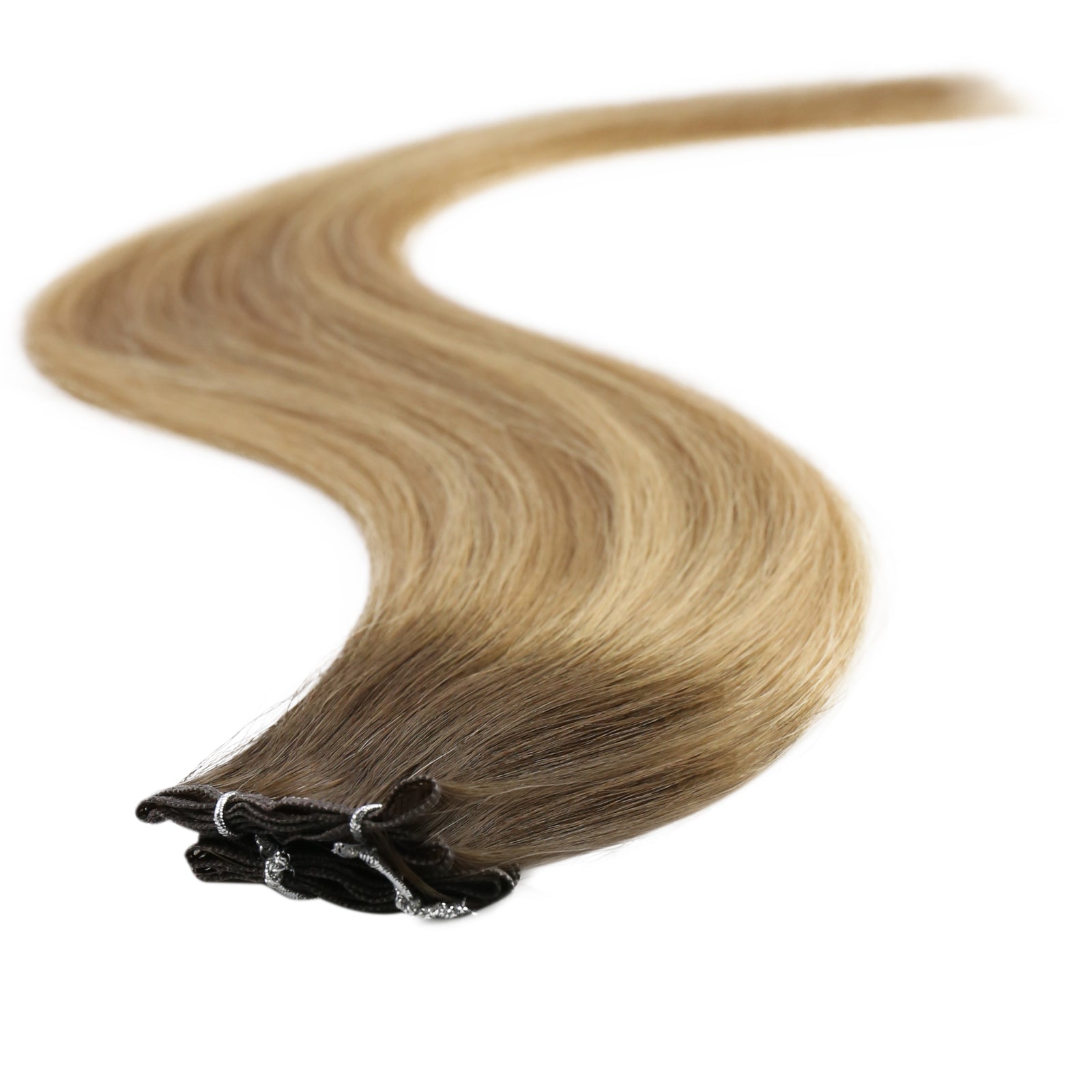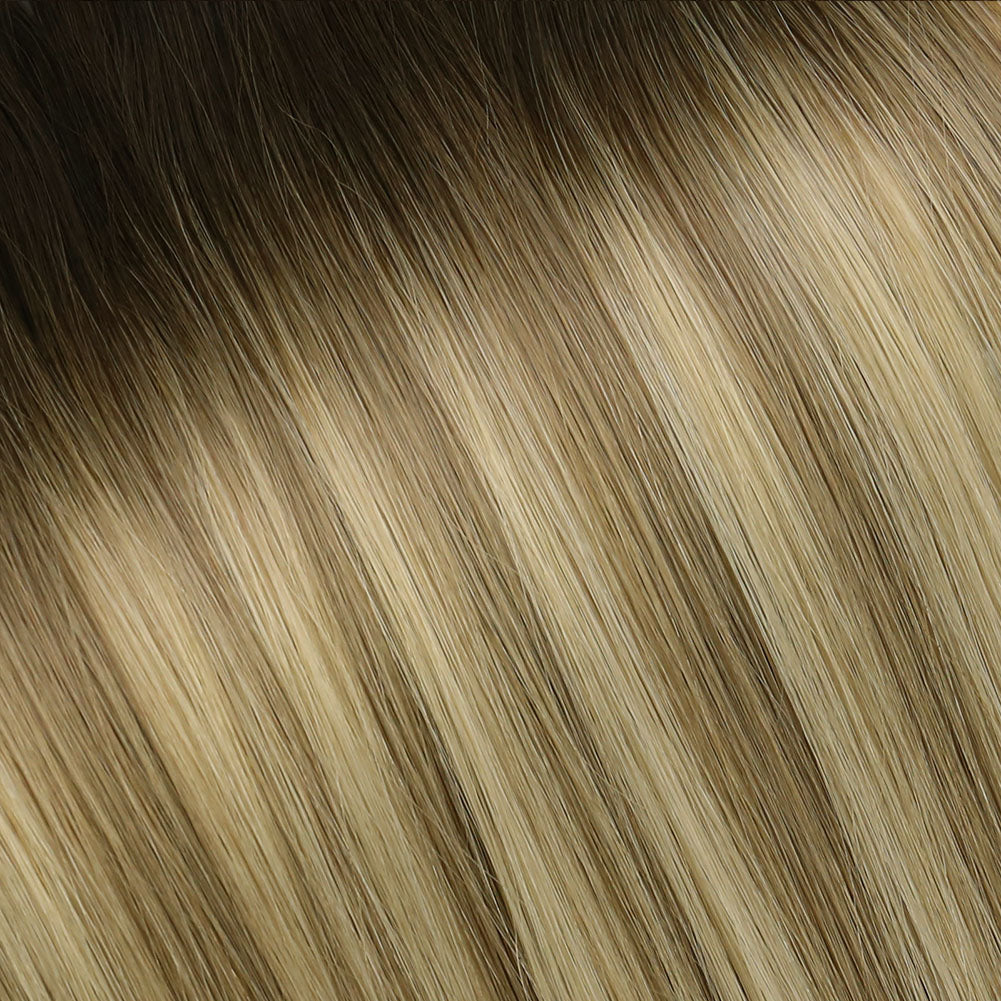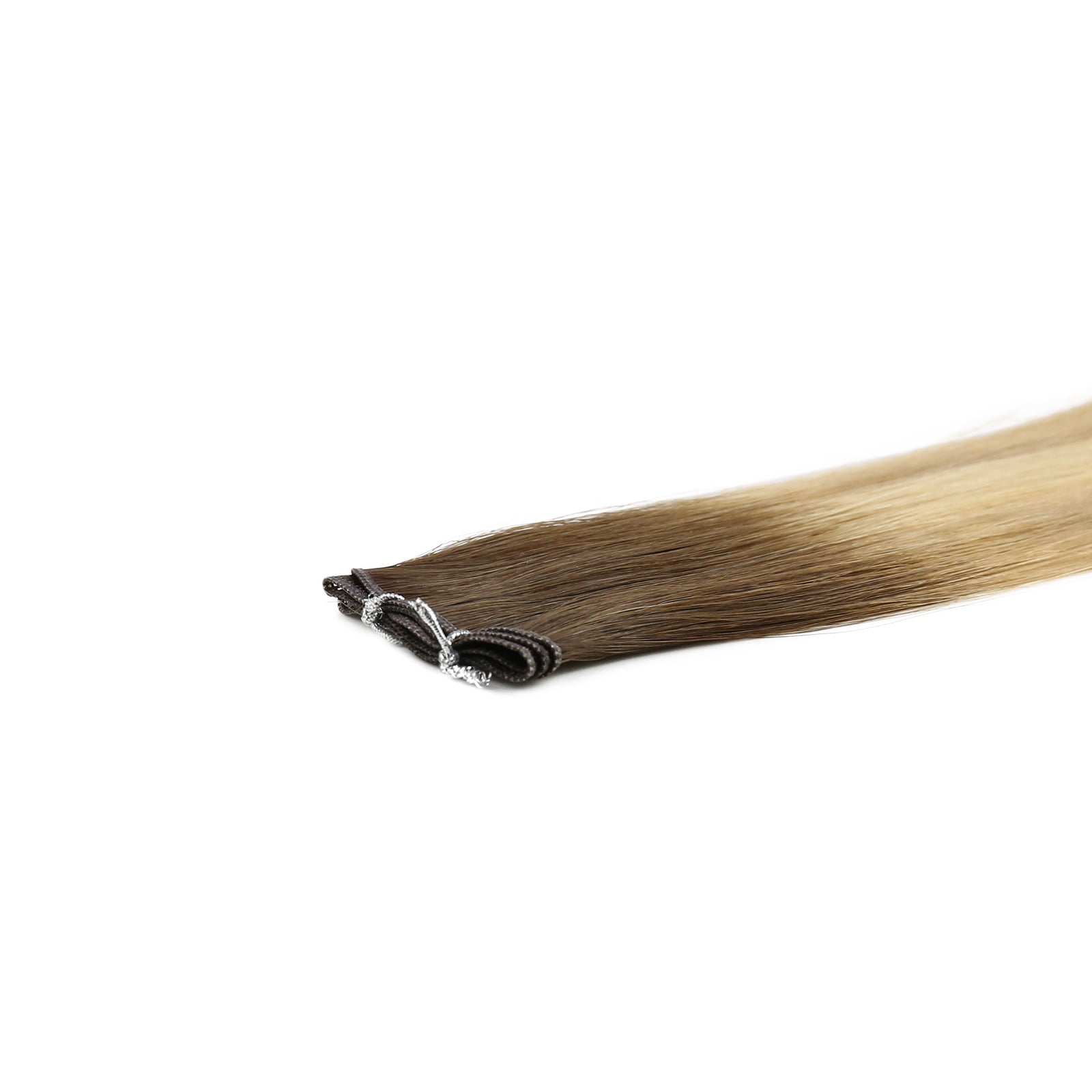"How long do hand-tied extensions last?" is a query that opens the door to the captivating realm of hand-tied hair extensions, a beauty innovation adored by style aficionados across the globe. More than just their lasting power, these extensions provide a flawless integration, exceptional comfort, and the flexibility to instantly revolutionize your appearance. Explore our detailed guide to discover all there is to know about hand-tied hair extensions, from their enduring quality to their application, care, and how they can completely transform your look.
What are hand-tied extensions?
Hand-tied extensions are a hair extension technique where small wefts of hair are tied by hand to tiny sections of your natural hair. This method is gentle because it doesn't use heat, glue, or tape—just knots, making it less harmful and more hidden. The result? A smooth, natural blend that adds volume and length without looking obvious. What makes hand-tied extensions popular is their customizability; they can be adjusted to match your hair's thickness, color, and texture, giving you a comfortable, lightweight, and flexible way to change up your look.
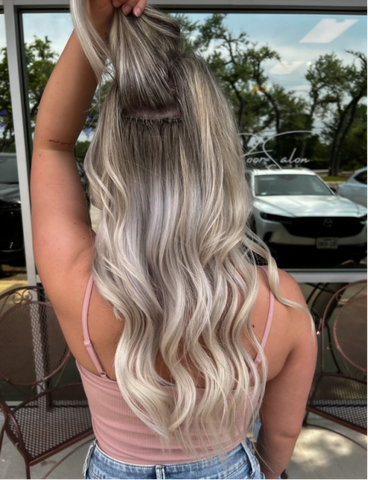
How long do hand-tied extensions last?
So, generally, how long do hand-tied extensions last? Hand-tied extensions offer a semi-permanent solution for those seeking to enhance their hair's volume and length, typically lasting between 4 to 6 months before requiring reapplication. The longevity of these extensions largely depends on the quality of hair used, the precision of the application, and the diligence of the aftercare regimen.
High-quality extensions, when meticulously installed by a professional stylist and coupled with a consistent maintenance routine, can ensure the extensions remain in pristine condition throughout their wear. This includes gentle washing, regular conditioning, and careful styling to prevent undue stress on the extensions and the natural hair. Moreover, as natural hair grows, adjustments by a professional are necessary to maintain the extensions' natural appearance and comfort, further extending their lifespan and ensuring a seamless blend with your natural hair.
How to install hand-tied extensions?
Installing hand-tied hair extensions is a detailed process that needs skill and precision, usually done by a professional stylist to keep your natural hair healthy and ensure the extensions look natural. Here's a straightforward summary of how it's done:
- Consultation: First, you'll have a detailed chat with your stylist to decide on the length, volume, and color you want, and they'll check the condition of your natural hair.
- Sectioning: Your hair will be divided into sections where the extensions will be added. The stylist picks these areas based on where you need more volume or length.
- Creating Anchor Points: The stylist selects a small section of your hair to attach the extensions, using a bead, thread, or another method to make a secure foundation.
- Attaching the Wefts: The stylist then ties the hand-tied wefts to these anchor points with a special thread, adding them layer by layer for a seamless look.
- Blending and Styling: Once the wefts are in place, the stylist trims and blends them with your natural hair and styles it to your liking.
- Maintenance Advice: You'll get tips on how to look after your extensions, like how to wash, brush, and style them to keep both your extensions and natural hair in good shape.
Remember, you'll need to return to the salon every 6-8 weeks for maintenance to adjust the extensions as your hair grows and to keep them looking great.
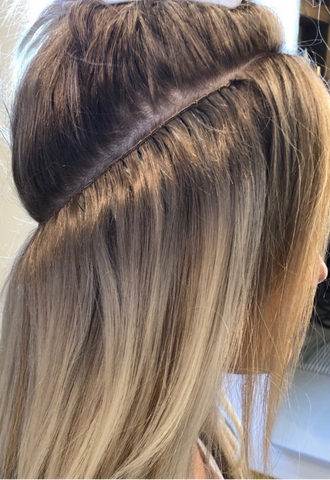
Placement of hand-tied extensions
Placement is determined by several factors, including the client's hair density, head shape, desired volume, and length. Here's how placement is typically approached:
Strategic Placement for Natural Look
- Crown and Sides: Extensions are often placed around the crown and sides of the head to add volume and length where it's most needed. The stylist will avoid placing extensions too close to the hairline or parting to ensure they remain undetectable.
Customization for Individual Needs
- Tailored to Hair Density: For those with thinner hair, extensions are placed in a way that maximizes volume without straining the natural hair. In contrast, for denser hair, extensions can be placed in more areas.
Achieving Desired Style
- Length and Volume Goals: The final look depends on the client's desired outcome. For more volume, extensions are placed more densely. For length, they might be distributed evenly from the mid-lengths to the ends.
Ensuring Comfort and Durability
- Avoiding Tension: It's vital to place extensions in a way that avoids unnecessary tension on the natural hair. This means not applying extensions too tightly and distributing them evenly across the head.
Maintenance and Adjustments
- Regular Check-ups: Proper placement also considers the ease of future adjustments. As natural hair grows, the extensions will need to be moved up. Strategic initial placement ensures this process is as straightforward as possible.
Can I take out hand-tied extensions at home?
Removing hand-tied extensions at home is not generally recommended because it can lead to damage to your natural hair if not done correctly. Professional stylists are trained to remove these extensions safely, ensuring that your hair is not pulled, damaged, or cut in the process. However, if visiting a professional is not an option and you need to remove them at home, it's crucial to proceed with utmost care and patience.
Here are some tips if you decide to remove your hand-tied extensions at home:
- Gather the Right Tools: You'll need a small pair of scissors, a hair clip, a wide-tooth comb, and a detangling spray or conditioner.
- Prepare Your Hair: Apply a detangling spray or conditioner to your hair to minimize pulling and breaking during the removal process. Gently comb through your hair to remove any tangles.
- Locate the Thread: Carefully part your hair to expose the wefts and the threads that secure the extensions to your natural hair.
- Cutting the Thread Carefully: Using the small scissors, carefully snip the thread that binds the extension weft to your natural hair. Be very careful to only cut the thread and not your natural hair or the weft itself.
- Gentle Removal: Once the thread is cut, you should be able to gently slide the weft out of your hair. If you encounter resistance, check to ensure all the thread has been cut and gently work the weft free.
- Repeat as Necessary: Move through your head, repeating this process for each weft. Take your time to avoid pulling or damaging your hair.
- Aftercare: Once all extensions are removed, wash your hair with a gentle shampoo and follow with a hydrating conditioner. Consider using a deep conditioning treatment to help your hair recover from any stress caused by the extensions.
- Inspect Your Hair: After removal, inspect your hair and scalp for any signs of stress or damage. If you notice any issues, consider consulting with a professional stylist for advice on recovery treatments.
While removing hand-tied extensions at home is possible, the risk of damaging your hair still exists. If at any point you feel unsure or uncomfortable with the removal process, it's best to wait and have the extensions removed professionally to protect your hair's health and integrity.
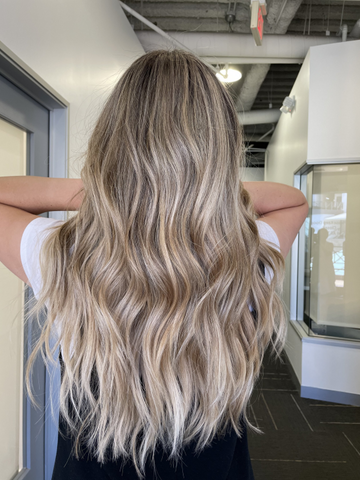
How much do hand-tied extensions cost?
Just as commonly inquired as "How long do hand-tied extensions last?" is the question of their cost. The price of hand-tied hair extensions can differ greatly based on factors such as the hair's quality, the quantity needed for your desired outcome, the stylist's level of expertise, and the salon's location. Below is an outline of the main elements that affect the pricing:
- Quality of Hair: Higher quality hair, especially 100% human hair, tends to be more expensive. The price can also vary based on the hair's origin, texture, and whether it has been treated or processed.
- Quantity: The more hair you need (either for length, volume, or both), the higher the cost will be. The total amount of hair is usually measured in grams, and salons may price extensions based on the amount used.
- Stylist's Expertise: Experienced stylists or those with a strong reputation in the industry typically charge more for their services. Their expertise can ensure that extensions are applied correctly, look natural, and are less damaging to your own hair.
- Location: Salons located in major cities or upscale areas often charge more than those in smaller towns or less expensive regions due to higher operational costs.
- Maintenance and Removal: The initial cost isn't the only expense; maintenance visits are required every 6-8 weeks to move up the extensions as your natural hair grows. Additionally, the cost of eventual removal should be considered.
On average, the initial installation of hand-tied extensions can range from $600 to $2,000 or more. This price includes the hair itself, the stylist's service for installation, and the initial cut and style to blend the extensions with your natural hair. However, it's important to consult with salons or stylists to get a detailed quote based on your specific needs and desires. Keep in mind that while the upfront cost might seem high, investing in quality hair and professional installation can lead to better wearing experience and less potential damage to your natural hair.
Are hand-tied hair extensions damaging?
Hand-tied hair extensions, when applied, maintained, and removed correctly, are among the least damaging hair extension methods. This technique avoids the use of heat, glue, or tape, which are common culprits of damage in other extension types. Instead, it relies on carefully tying hair wefts to natural hair, minimizing stress on hair follicles. However, the potential for damage still exists, especially if extensions are applied too tightly, not maintained properly, or if the natural hair is very fine or weak. Ensuring that a skilled professional performs the application and removal, and following proper care routines, can significantly reduce the risk of damage.
Want to learn more? Here is an ultimate guide to hand-tied hair extensions for you.
Summing up
This guide, providing more than just a response to "how long do hand-tied extensions last", has given you a comprehensive understanding of hand-tied extensions.Remember, the beauty of hand-tied extensions lies not just in their aesthetic appeal but in the care and expertise behind each strand. Embrace this beauty innovation with confidence, knowing you're well-informed to make the best decisions for your hair's health and style.
